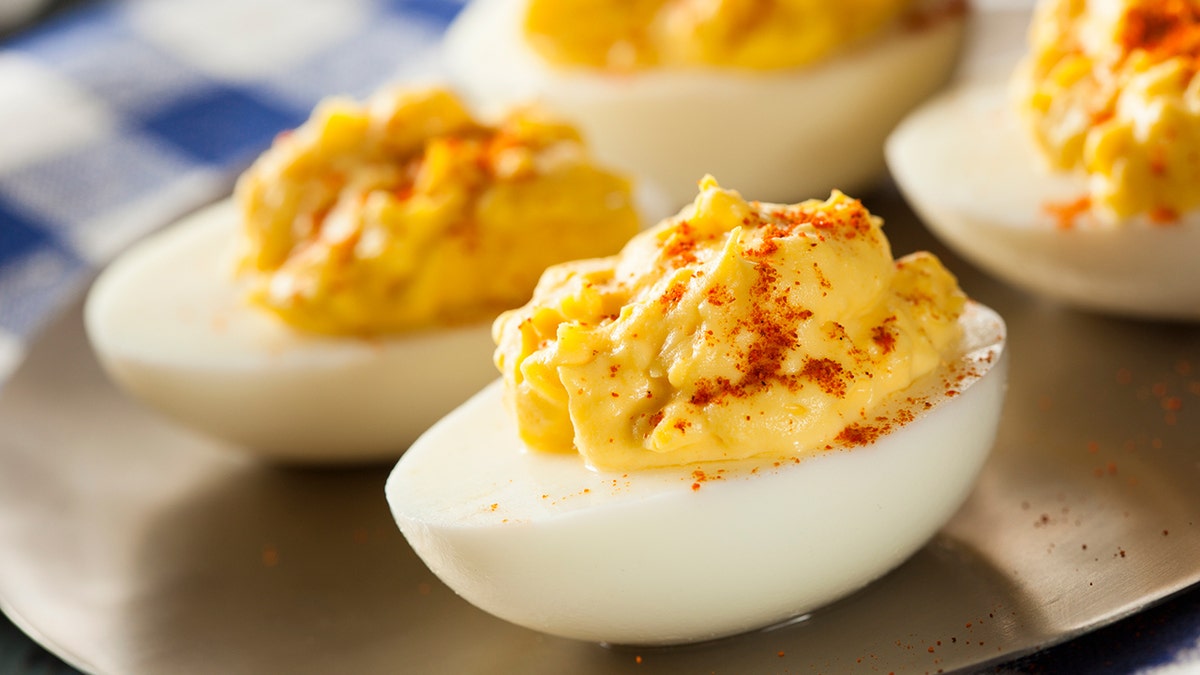
It's got nothing to do with evil, of course. Just a little sinful. (iStock)
Deviled eggs are everyone and their mother’s favorite passed app. And they certainly sound fun, too. Deviled eggs. More like devilishly delicious, right? Traditionally made with mayonnaise, mustard, and paprika, deviled eggs taste sinfully satisfying. Hello, calories and fat! So you might think that’s how they got their name. But that rumor is total baloney.
To get to the bottom of this, we started at the beginning. Which came first: the devil or the egg?
The devil, actually. Deviled eggs were anointed with this mischievous name long after the term “deviled” had already been deemed a descriptor for many other foods. According to the Oxford English Dictionary, in 1786 to “devil” a food meant to cook it with a spicy seasoning or over very high heat. It was thought that this association grew from the similarly high heat presumed from the depths of hell.
More From The Daily Meal
Later, the definition warped into heavily seasoning a dish or lathering it with an excess of rich condiments. In the case of bologna, for instance, it was common to cook up a deviled balogna salad: thick chunks of bologna layered with spices and mayonnaise. Evil work, indeed. Other deviled dishes included deviled ham, deviled crab, and deviled short ribs, all of which are soaked in mayo. Why in devil's name would you do that to meat? That's a mystery.
But eggs actually turned devilish when people began adding mayonnaise and spices. The famous deviled egg was born.
Nowadays, there are other terms used to describe these little devils, as well. Depending on where you’re from, you might use a less hellish name such as “stuffed egg,” “dressed egg,” or “mimosa egg.” But no matter what you call them, it’s practically a sin not to serve deviled eggs at your next party brunch. Doll up your dozen with these heavenly twists on classic deviled eggs.




















